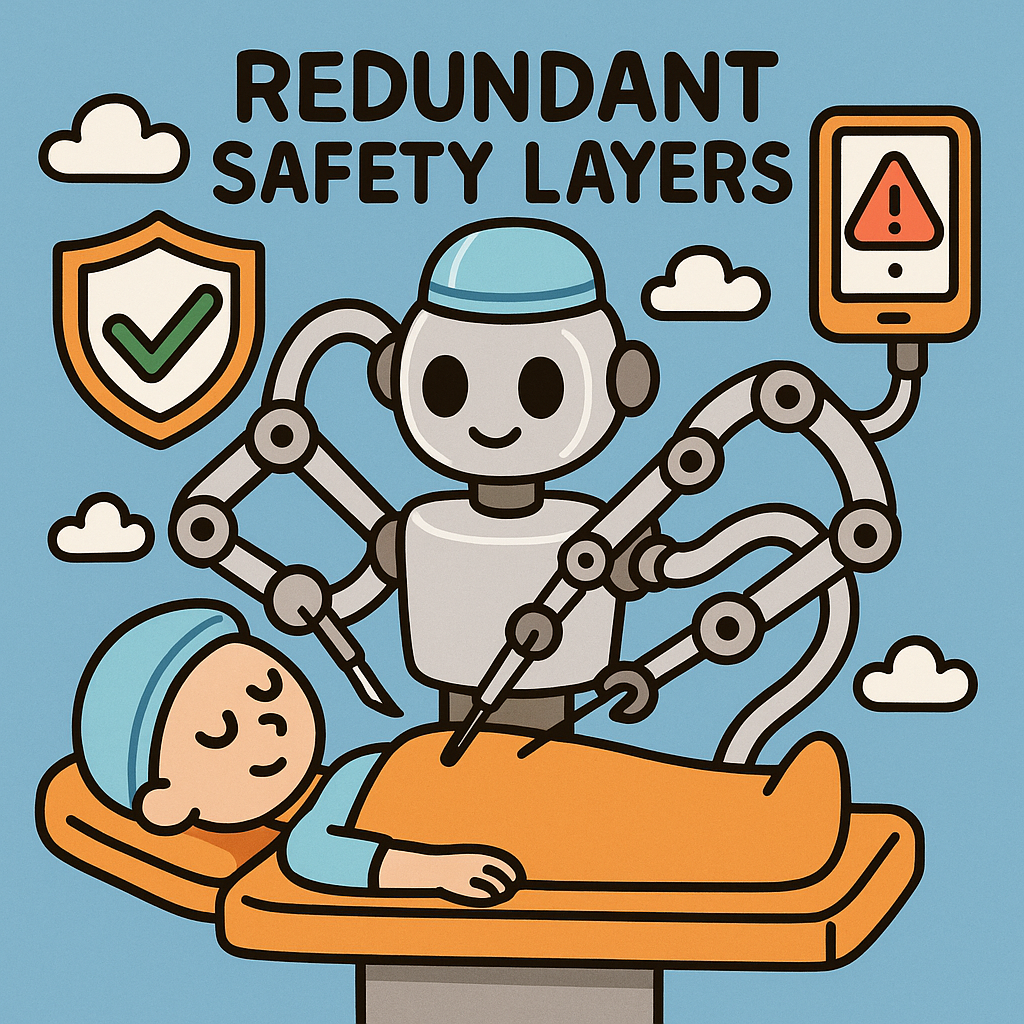Understanding the Need for Redundant Safety Layers
The rapid advancement of robotic surgical systems has revolutionized the field of minimally invasive surgery. However, as with any technology that operates in high-stakes environments, the need for robust error detection mechanisms becomes paramount. With potential risks to patient safety and surgical outcomes, designing redundant embedded safety layers is not merely a suggestion—it is a necessity.
Challenges in Real-Time Error Detection
One of the primary challenges in creating reliable robotic surgical systems lies in the real-time detection of errors. These systems often operate under stringent timing constraints, where delays in error detection can lead to catastrophic outcomes. The complexity of surgical tasks introduces numerous points of potential failure, including hardware malfunctions, software bugs, and unexpected environmental interactions.
To tackle these challenges, engineers must consider the architecture of their systems carefully. The traditional approach of relying solely on a single layer of safety can be insufficient; instead, a multi-layered approach that combines hardware redundancy, firmware checks, and sophisticated algorithms for real-time monitoring is essential.
Hardware Redundancy Strategies
At the hardware level, redundancy can be implemented through the use of dual or triple-redundant systems. For example, employing multiple sensors for critical measurements—such as position, force, and tissue feedback—ensures that if one sensor fails, others can compensate. This is crucial in maintaining the integrity of the surgical process. However, adding redundancy increases the complexity and cost of the system, leading to design trade-offs that must be meticulously evaluated.
Furthermore, the choice of components matters significantly. Utilizing components with high reliability ratings, such as those certified for medical use, can mitigate risk. Engineers often lean towards fault-tolerant designs, ensuring that individual component failures do not compromise overall system functionality.
Firmware Checks and Algorithm Design
On the firmware side, implementing watchdog timers is a common practice. These timers can reset the system or trigger a safe state if the firmware becomes unresponsive. However, care must be taken to balance the responsiveness of these timers with the need for the system to react promptly to surgical commands. A poorly tuned timer can result in unnecessary halts in operation or, conversely, missed fault conditions.
Developing algorithms for error detection is equally critical. Machine learning techniques can be employed to analyze sensor data in real-time, identifying anomalies that may not be immediately apparent through traditional programming methods. For instance, algorithms trained on historical surgical data can detect patterns indicative of impending failures, allowing preemptive action. Here, the engineering challenge lies in ensuring that these algorithms run efficiently within the real-time constraints of the system.
Design Trade-offs in Safety Layer Implementation
When designing redundant safety layers, engineers often face a series of trade-offs. Increased redundancy can lead to higher costs and greater complexity, making maintenance and updates more challenging. Additionally, the integration of multiple safety layers can introduce latency, which is detrimental in a real-time surgical context. For example, while a three-tiered redundancy might offer improved safety, it can also complicate the decision-making algorithms, leading to longer processing times.
Another consideration is the physical space within the robotic system. Surgical robots must maintain a compact form factor while housing multiple redundant systems. As such, careful selection of components and innovative packaging solutions become key. Engineers frequently turn to system-on-chip (SoC) solutions that integrate multiple functions into a single compact unit, saving both space and power.
Importance of Testing and Validation
Finally, the importance of rigorous testing and validation cannot be overstated. Each layer of redundancy must be thoroughly tested under various conditions to ensure that it behaves as expected. This includes simulating failures and evaluating the system’s response. In many cases, engineers employ fault injection techniques to deliberately introduce errors and observe how the system copes with them. Such thorough testing ensures that when real-world scenarios arise, the system has been pre-conditioned to respond appropriately.
In the end, designing redundant embedded safety layers for robotic surgical systems is a complex but rewarding endeavor. The interplay of hardware and software, combined with the necessity for real-time responsiveness, creates a rich landscape for engineering innovation. Each decision made in the design process can significantly impact patient safety and surgical efficacy, making the role of the engineer in this field both critical and fulfilling.



